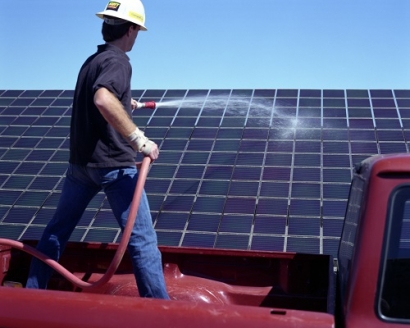
The Benefits
Obviously, the most important benefits are the savings, both monetary and environmental. The study suggests that if the available space that educational buildings provide for solar panels is used, then up to 75% of their electricity needs could be covered. This saved money could then be used to benefit the students and the administration. The researchers go on to project that if an all-out attempt to take advantage of educational building space is recognized, then the savings could be worth upwards of $4 billion per year.
Environmentally, this would remove schools from the cities' energy, which is sourced from coal-burning and natural gas. These methods are some of the main contributors to the greenhouse effect and the serious health consequences that come along with it. School districts are generally seen as educational institutions and not as institutions of clean energy, which isn't fair to the kids because climate change is an issue that disproportionately affects the young. This will allow their buildings to build a brighter future for them, both educationally and environmentally.
Most educational buildings have large flat roofs that are perfect for solar panel installation. The large parking lots can also be used as solar panel canopies, which not only protect from rain but also shade cars on hot days. One benefit that’s doesn’t come to mind immediately is the learning opportunity it gives the kids. Some schools are using the solar panels to teach more about solar energy and implement them in math problems for the students. With all the benefits, it’s a surprise that educational buildings haven’t been considered sooner.
Which States Would Benefit The Most?
It doesn’t take a solar energy expert to predict that Florida, Texas and California stand to benefit the most from educational solar panels thanks to their natural exposure to the sun. These states have the most potential energy to gain from the sun, while states in the Midwest are the ones who would be creating the biggest reduction in air pollutants. States like Wisconsin and Ohio could reduce their health risks and energy costs the most. Last April, The Madison Metro School District became the first school district in Wisconsin and the largest district in the nation to announce their goal of using 100% clean energy by 2040.
Application
The study goes on to talk about the implementation of the solar panels. It suggests that each educational institution shouldn’t purchase its own solar panel system. This wouldn’t be economically viable. Hiring a third party company to set up, own, and sell the school their energy at a fixed rate is a much more feasible plan.
The Department of Energy is making efforts to push for schools to adopt this renewable energy. The DOE’s Zero Energy Schools Accelerator provides schools with the technical assistance and resources needed to achieve zero energy. Studies like the Technical Feasibility Study for Zero Energy K-12 Schools have paved the way for educational institutions in all U.S. climate zones to follow. Their suggestions also allow school districts to stay within construction budget.
The researchers concluded by saying that there are rebates currently available that exceed the health, financial, environmental, and climate change benefits that educational rooftop solar panel systems provide to society. They applauded California and New York for their incentive programs for renewable energy but were curious as to why other states haven’t adopted similar programs yet.

